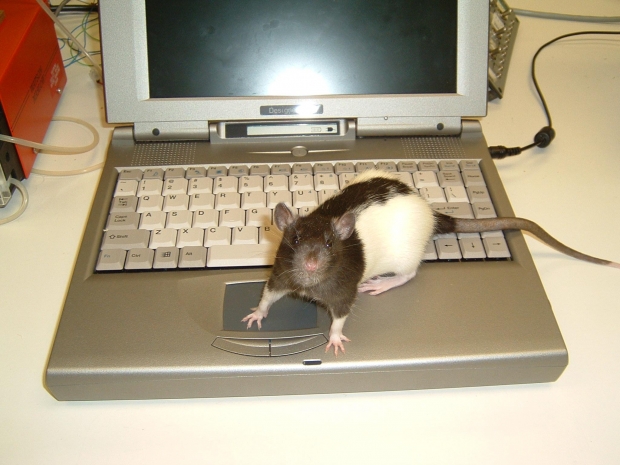A team of boffins has created a computer by wiring four rats brains together. Ratnet was capable of completing computational tasks better than any one of the rats would have been able to on its own.
In Duke University's Miguel Nicolelis's most recent paper, published in Scientific Reports, he proves that networks formed by multiple animal brains, cooperating and exchanging information in real time through direct brain-to-brain interfaces, could provide the core of a new type of an organic computer.
He has also created a similar structure that wired three three monkey brains to control a virtual arm on screen across three axes. Getting the animals to sync their brains wasn't actually all that difficult. In the case of the monkeys, they were trained to operate a virtual monkey hand onscreen using only their brains.
Nicolelis's wanted to see if he could "create a superbrain formed out of individual brains," he told me, which is where the rat study came in.
The rats were deprived of water and were given it only if they were able to synchronize their brains together to complete a task. From there, Nicolelis essentiality turned these rats into processors.
"Once we saw we could make them behave coherently, we built a new type of computer—we did the type of tests anyone who knows about processors would do with a piece of silicon. Can we store information and can we recall it later? Can we have a memory?" he said. "It turns out that, if the animals are awake, we can."
The Ratnet could do a number of "useful computational problems, such as discrete classification, image processing, storage and retrieval of tactile information, and even weather forecasting."
In one test, the ratnet was given different barometric pressure and temperature information, and then the computational power of the Brainet itself was used to calculate the probability that it would rain at a rate higher than chance.




